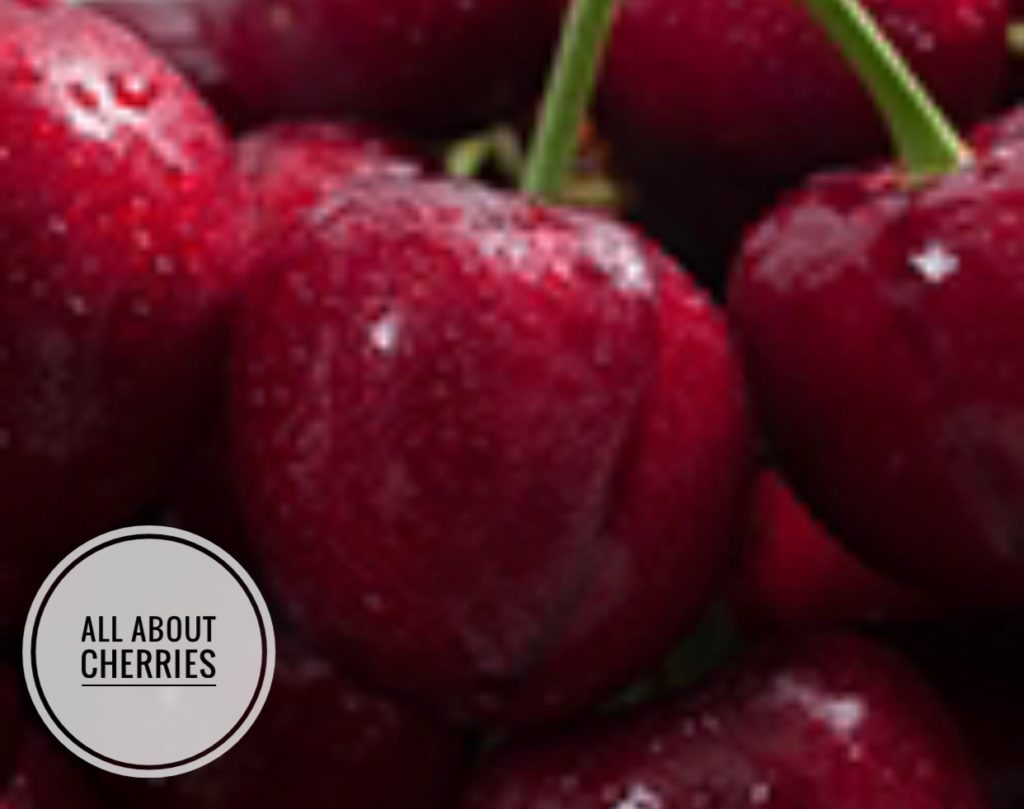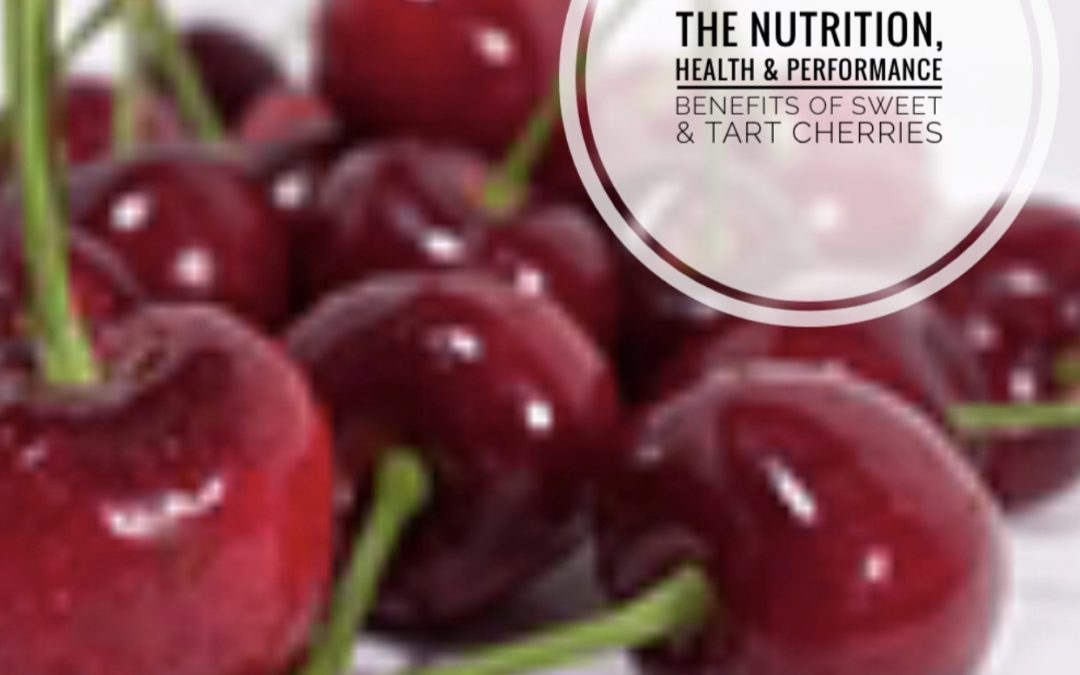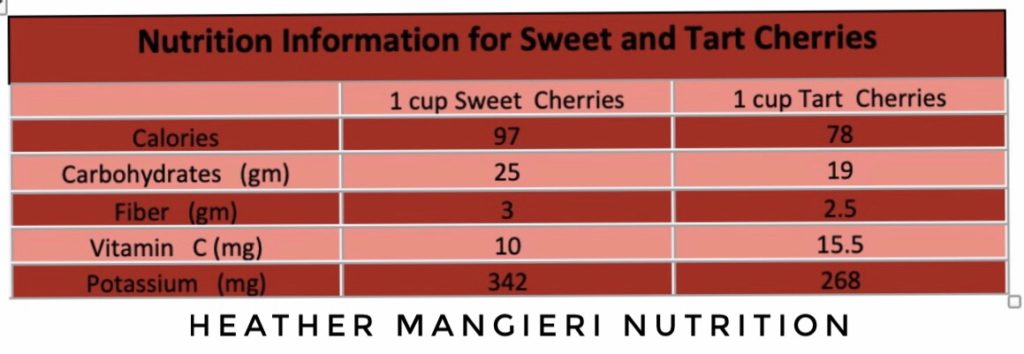 What do you think of when you hear the phrase, “pretty, pretty please with a cherry on top?” If your mind jumps straight to a dessert with whipped cream and a bright red maraschino cherry, you’ll want to keep reading. The FDA defines maraschino cherries as ones that have been dyed red, impregnated with sugar and packed in sugar syrup with added flavoring. Doesn’t sound very nutritious, does it? Luckily, it’s cherry season. So, skip the bright red ones in a jar, and discover the amazing flavor and health benefits of the real deal.
What do you think of when you hear the phrase, “pretty, pretty please with a cherry on top?” If your mind jumps straight to a dessert with whipped cream and a bright red maraschino cherry, you’ll want to keep reading. The FDA defines maraschino cherries as ones that have been dyed red, impregnated with sugar and packed in sugar syrup with added flavoring. Doesn’t sound very nutritious, does it? Luckily, it’s cherry season. So, skip the bright red ones in a jar, and discover the amazing flavor and health benefits of the real deal.
Reasons Why Adding a Cherry on Top is a Great Idea
Cherries can be separated into two broad categories: sweet and tart (also referred to as sour). Both are known to be good sources of vitamin C, fiber, and potassium. The following table compares the two (amounts per 1 cup without pits):
Cardiovascular Disease, Cancer, Inflammation, and Oxidative Stress
Bioactive compounds known as anthocyanins produce the signature red color of cherries. Those compounds alone are often praised for their health benefits, but researchers hypothesize that they work in conjunction with the fruits’ other bioactive compounds. Together, anthocyanins, vitamin C, carotenoids, and quercetin have the potential to reduce the risk of cardiovascular disease and cancer, reduce arthritis-associated inflammation and guard against diabetes-related oxidative stress.
Blood Pressure
Both varieties of cherries boast a high amount of potassium, which may help lower blood pressure. They also contain the flavonoid quercetin, which acts as an antioxidant. More specifically, quercetin may have the ability to relax blood vessels, further reducing hypertension.
Sleep
Tart cherries are one of the few natural food sources of melatonin – a chemical that helps to regulate our internal clock. A study in the European Journal of Nutrition concluded that consuming tart cherry juice for seven days resulted in improved sleep duration and quality in healthy adults.
Post-Workout Muscle Soreness
A study in the Journal of the International Society of Sports Nutrition concluded that consuming tart cherry juice the week before, as well the day of, a physically demanding, long-distance running event decreased post-run muscle soreness. Even if you aren’t a long-distance runner, you can still reap the exercise-related benefits of tart cherry juice. Another study in the British Journal of Sports Medicine concluded that tart cherry juice reduced symptoms of exercise-induced muscle damage caused by eccentric elbow flexion contractions. These benefits are most likely due to the antioxidants in tart cherry juice protecting against free radical damage caused by exercise.

Get Them While You Can
If you want the best of the best, you have to act fast. Fresh cherries have a very short season, lasting from May – August. Close to 95% of the cherries we consume are grown in America. And, mostly all of our cherry trees blossom over a three-week period from late May to early June.
Luckily, if you’re craving the flavor in the middle of winter, tart cherries can be purchased year-round frozen, dried, or as cherry juice.
- Look for glossy, firm ones that still have their stems attached. Try to choose deeply colored cherries. The darker the color, the more concentrated the antioxidants!
- Cherries left at room temperature will keep for about 2 days, but they will last for up to one week if stored in the refrigerator. They should be stored unwashed, but remember to wash them right before you eat them.
- Don’t have a cherry pitter? Huffington Post shares simple ways to pit cherries without one!
Try Freezing Your Own
If frozen, pitted cherries can be last up to 10 – 12 months. Hockaday Orchards shares two methods for freezing your own cherries.
Ways to Enjoy Cherries
- In the mood to bake? Cherry pies and tarts are always a hit. You can also use cherries instead of the usually blueberries or raspberries in breads and other baked goods.
- Make your own chocolate-covered strawberries: Dip fresh cherries melted dark chocolate to get an extra helping of antioxidants.
- Use cherries in a fruit smoothie.
- Add dried cherries to oatmeal or trail mix.
- Add cherries to cold salads. This wheatberry salad made with cherries is delicious!
- Make your own cherry sauce. Depending on your mood, you can use it to top something sweet like pancakes or something savory like chicken.
- Wash them and eat them plain!



 Hi, I’m Heather – a registered dietitian, busy mom, consultant, adventure junkie and travel addict who has mastered living healthy on the go. My blog is where I share simple recipes and healthy living tips to help and inspire others to live their best life.
Hi, I’m Heather – a registered dietitian, busy mom, consultant, adventure junkie and travel addict who has mastered living healthy on the go. My blog is where I share simple recipes and healthy living tips to help and inspire others to live their best life.